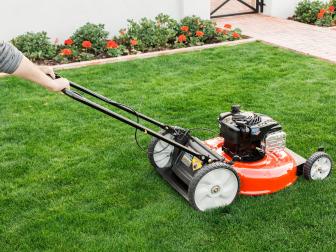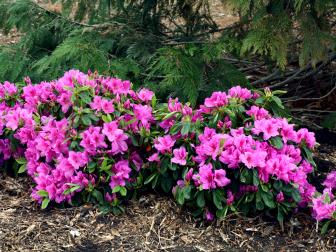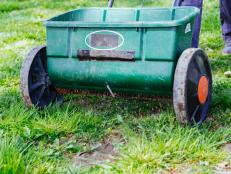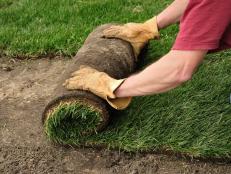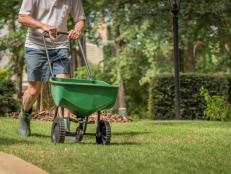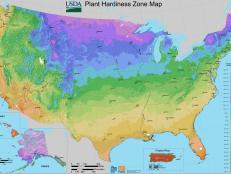How to Grow Grass in the Shade
Find expert tips for grooming a gorgeous lawn under a canopy of trees.
You can grow a pretty swath of lawn in a shady spot, as long as you pick the right grass and take care of it properly. Most turf grasses need at least four hours of direct sun to survive, but specialized shade-tolerant grass blends thrive in four hours of dappled sun or partial shade. In the cool-season grass category, the shade-tolerant grasses are rye and fine and tall fescues. Warm-season grasses that grow in shade include zoysia and St. Augustine.
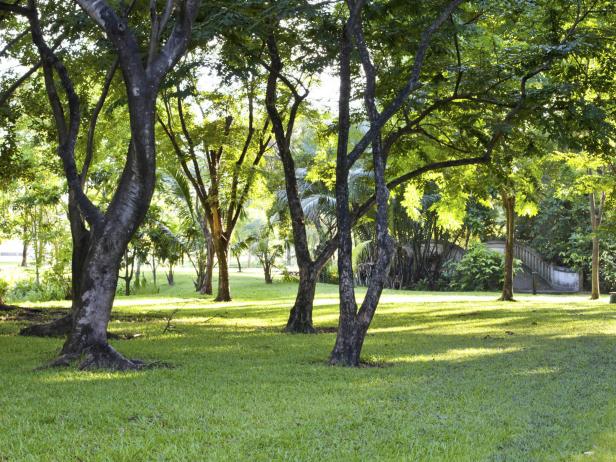
Chaiwat Photos
Pruning Trees
Many times shady areas beneath trees and tall shrubs can be lightened up by pruning limbs. As you prune, aim to thin the canopy so that sunlight can penetrate to the grass beneath. With trees, it’s also a good idea to remove lower branches in a process called “limbing up.” By raising the canopy of the tree, you’re creating opportunities for sunlight to reach turf by slanting in beneath branches. Tackle the pruning you can handle yourself with two feet on the ground. If you have mature trees, talk with a certified arborist.
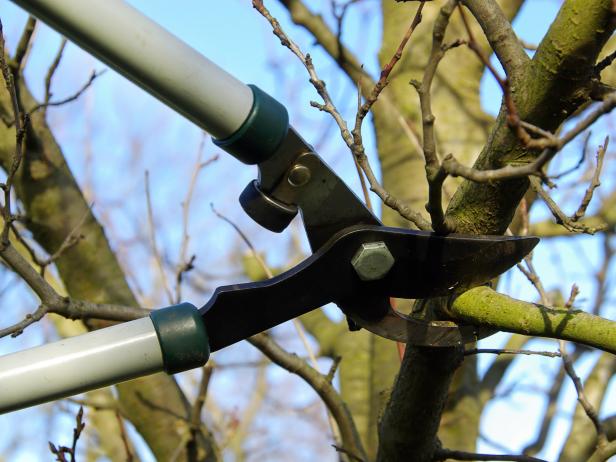
Aerate
Shady lawn areas benefit from soil aeration, which creates holes in the soil and exposes the root zone of grass. These holes allow for water, fertilizer and air to reach grass roots. When to aerate depends on what kind of grass you have. Tackle aeration so it’s done just before grass enters its peak growing phase. Aerate warm-season turf in late spring or early summer and cool-season grasses in early fall. Time fall aeration so it allows grass four weeks of active growth before your region’s average first frost. For the best aeration, use a core aerator that pulls actual plugs of soil from the lawn. In small shady areas, plunging a digging fork into soil accomplishes the task quickly and inexpensively. Aerate whenever the thatch layer is more than one-half-inch thick.
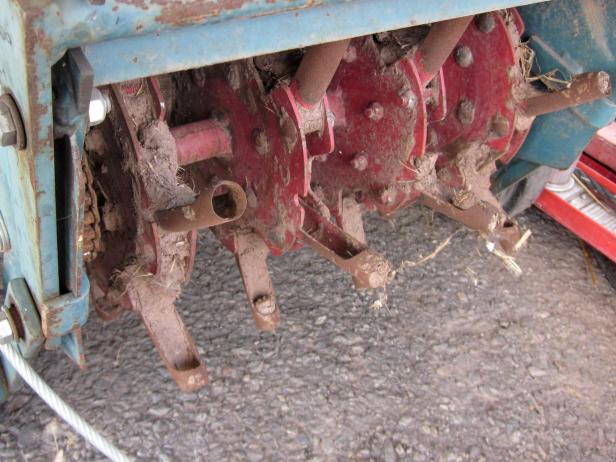
Julie A. Martens
Add Organic Matter
Grass in shady areas needs less fertilizer than grass growing in full sun. Spreading a thin layer of compost is a great way to give shady lawns a boost in early spring. If you plan to aerate, spread compost after aerating. It’s also a good idea to apply compost before overseeding thin, shady turf. The compost layer should be thin enough that you can still see grass blades after it’s applied. Use a push broom to spread it and work it between individual grass plants.
Choose the Right Grass Seed
Spend money on quality grass seed, whether you’re sowing a shady area for the first time or overseeding an existing thin lawn. A quality seed blend should include several different types of shade-tolerant grasses. That way, if one grass fails to succeed, there’s another to take its place. The label on quality grass seed should show weed seed content less than one percent and inert material content less than four percent. Never buy grass seed with a germination rate less than 70 percent.

Elenathewise
Overseed With Drop Spreader
If you’re starting a shady lawn from scratch, use a drop spreader for controlled seed distribution. Overlap on each pass to ensure you have adequate seed coverage. A broadcast or rotary spreader works well when you’re seeding larger shady areas. You’ll typically pay more for a drop spreader, but if you’re tending a typical suburban-size lawn, it’s worth the investment.
Knowing When to Water
A shady lawn doesn’t use water as quickly as sun-drenched turf. If your shady lawn is courtesy of a building shadow, you won’t need to water as frequently as if your shaded grass is caused by overhead trees. In this situation, you can’t always count on rainfall making it through the tree canopy to soak the soil. You also have tree roots competing for any available water. By watering grass deeply but infrequently, you’ll encourage deeper roots to form, which is vital for shady grass to survive.
Don't Over Cut
Keep grass in shady areas 1/2 to 1 inch taller than in the sunny parts of your yard. This gives each grass blade a greater area to conduct photosynthesis, which is the process that fuels grass growth. Take caution not to scalp shady lawn areas, as they frequently don’t recover. Most often this occurs during the first spring mowing, especially if you lowered the mowing deck last fall for the final mowing. Develop the habit of stopping and changing mowing height each time you come to your shady lawn section.
What Is the Ideal Height to Cut Grass?
Learn the factors that determine ideal grass height and at what height you should be cutting your lawn.
Fertilizing
On average, give shaded lawn areas roughly one-half to two-thirds less nitrogen per year compared to sunny lawns. In cold regions, apply winterizer fertilizer in fall at half the recommended rate.
Spot-Spray Weeds
Limit herbicide applications in shady lawn areas unless you have a weed problem. Try to spot spray weeds as needed. Herbicides can be stressful to grass, and in a shady lawn, you want to avoid all stress.
Consider a Pathway
Minimize all stresses that might affect grass growing in shady areas. Keep foot traffic to a minimum. Consider installing stepping stones or a simple mulch path to protect the grass. If you have children, try to avoid using the shady lawn as a play area. Do not allow pets to visit that area for potty breaks. It’s also a good idea to vary your mowing patterns in shady areas. They’re even more susceptible to suffering from compacted soil and ruts.

tortoon
15 Shrubs for Shade Gardens 16 Photos
See our favorite shrubs that flower and flourish in the shadows.

.-Battle-on-the-Beach-courtesy-of-HGTV.-.jpg.rend.hgtvcom.196.196.suffix/1714761529029.jpeg)





